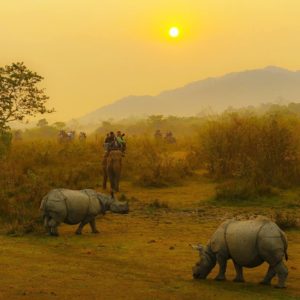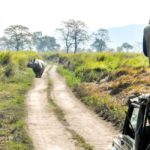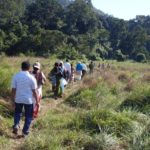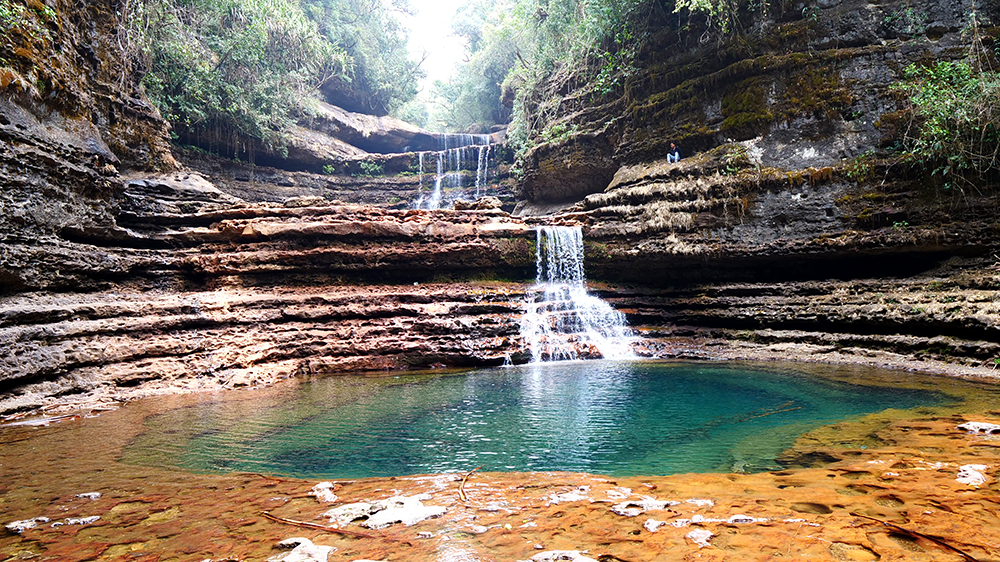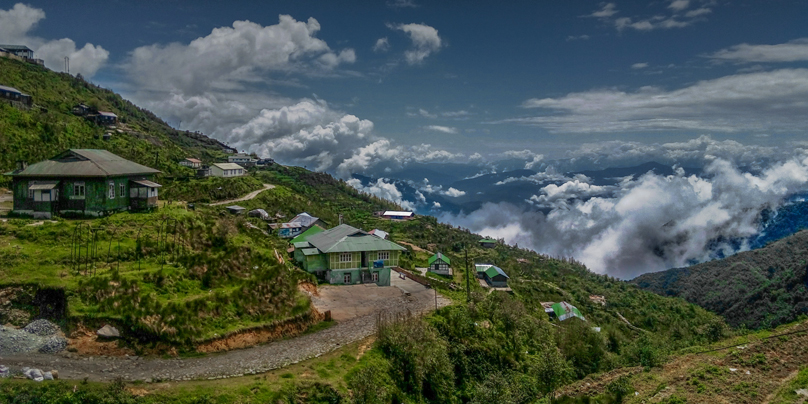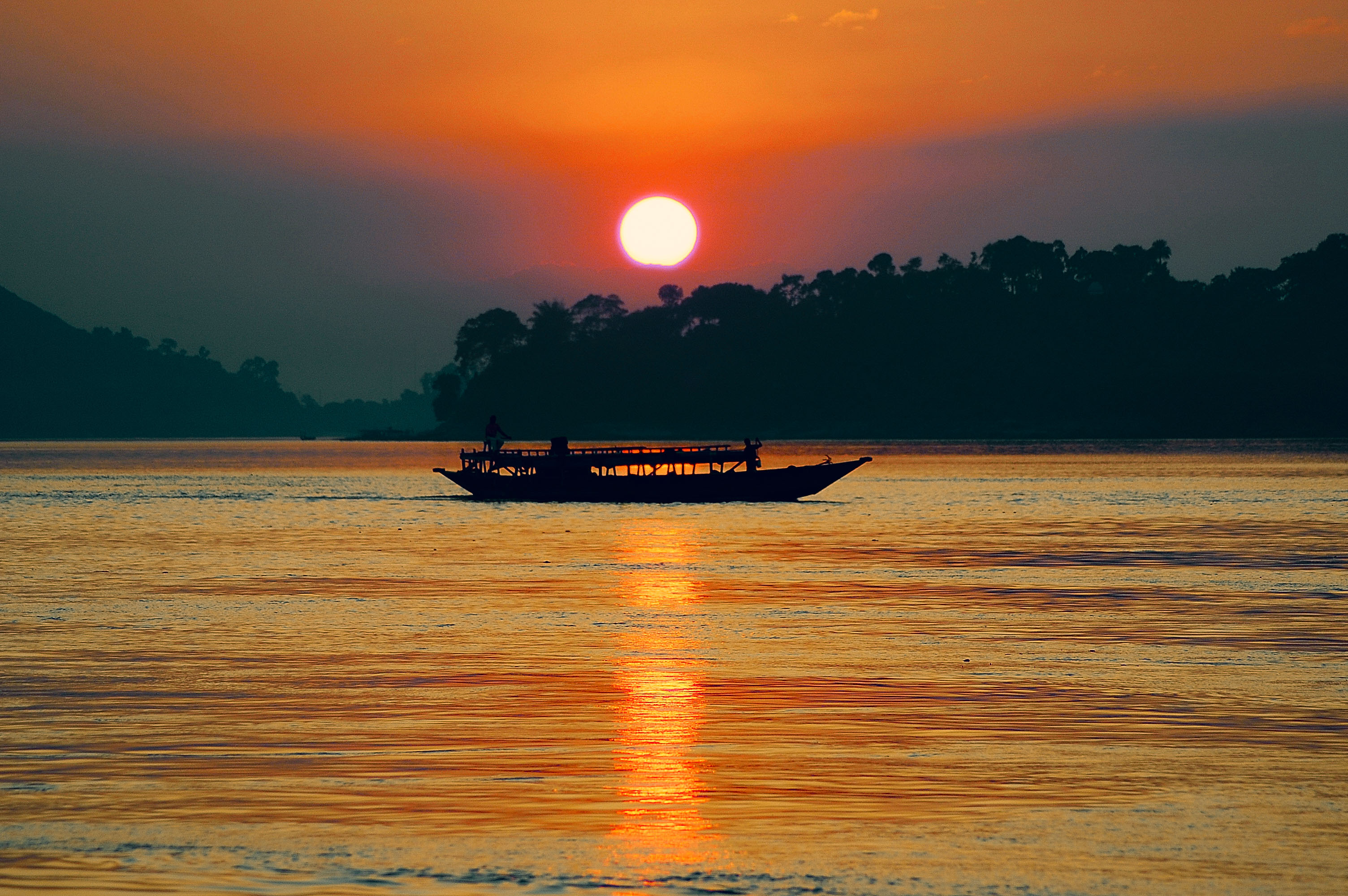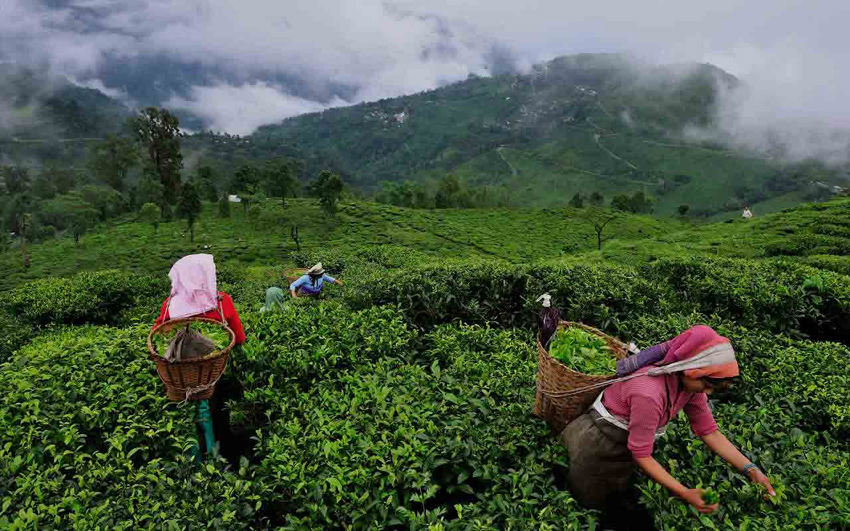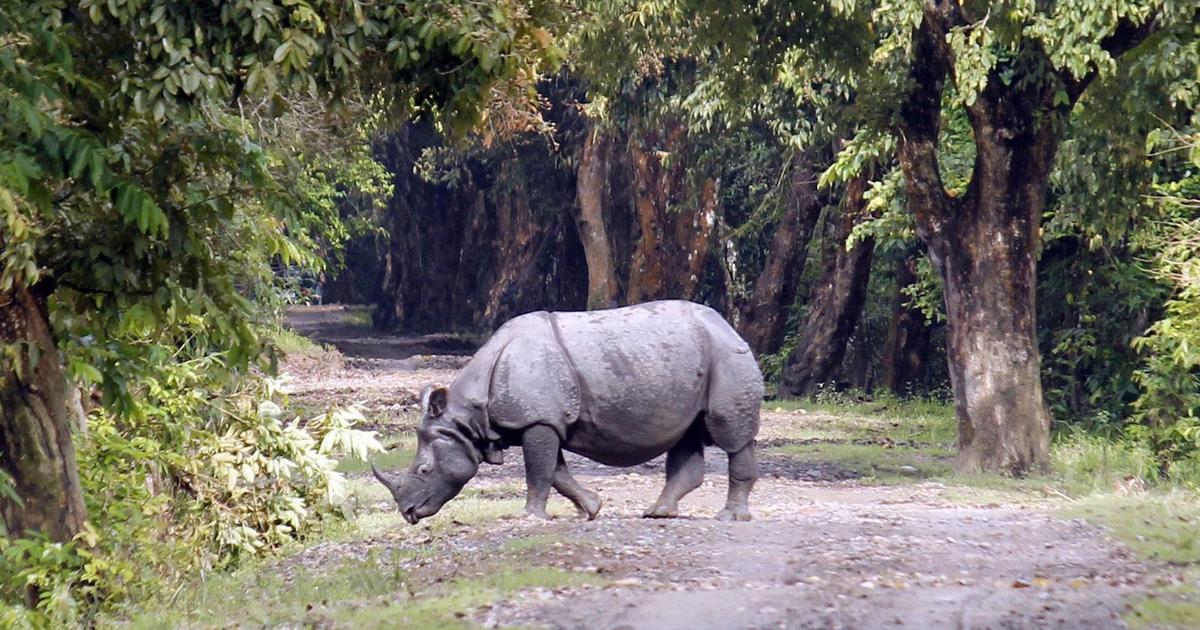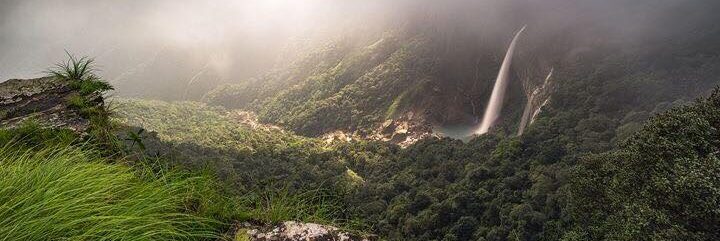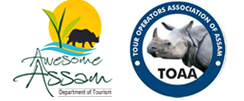- Elephant Safari in Kaziranga
There is a little debate regarding the originality of the name Kaziranga, there are so many number of possible explanations regarding the same. Legend says, a Karbi girl named Ranga eloped with a youth named Kazi, from Karbi Anglong. However their families did not accept their relationship and the couple disappeared into the forest and never came back again. The forest was then named after them. According to another legend, the great saint of Assam Sankardeva, once blessed a childless couple, Kazi and Rangai, and asked them to dig a big pond in the region so that their name would remain forever. One testimony of the Ahom History states that the 19th ruler of the Ahom king Pratap Singha (Siu-Seng-Pha) was passing by the region and impressed by the taste of fish and on inquiry, he was told it came from Kaziranga. However, the name Kaziranga can also also signify the “Land of red goats (Deer)”, as the word Kazi in the Karbi language means “Goat”, and Ranga means “Red”.
- Jeep Safari in Kaziranga
Kaziranga National Park has become synonymous with successful conservations of Great One Horn Rhinoceros (from the Greek word, “rhino” means nose and “ceros” means horn) / Unicornis (from the Latin word, “uni” means one and “cornis” also means horn) and also a home of may other threatened species including Indian Elephant (Elephant Maximus), Tiger(Panthera tigris), Hoolock Gibbon (Bunipithecus hoolock), Ganges dolphin (Platanista gangetica),Sambar (Cervus unicolor), Barasingha or Swamp Deer (duvauceli), Hog Deer, Indian Muntjac (Muntiacus muntjak), Water Buffalo (Bubalus bubalis) and Gaur (Bos frontalis)etc.
There are also over 500 species of birds have been recorder in the park including 25 specis of globally threatened category. Over and above ther are 21 rare and endangered species. In winter one can observe a large breeding population of Spot Bill Pelicans about one thousand breeding nests are found in a place which has been named as Pelican Colony in the Eastern Range.
Among the reptiles species like Water Monitor Lizard (Varanus salvator), Indian python (Python molurus), Cobra (Naja naja) and the King Cobra are found.
Few Defining years:
- Royal Bengal Tiger in Kaziranga National Park
1905: Preliminary notifications.
1908: Reserve Forest
1916: Game Sanctuary
1938: Open to visitors
1950: Wild Life Sanctuary
1974: National Park
1985: World Heritage Site by UNESCO
2006: Declared as Tiger Reserve.
Activities:
- Jeep Safari in Kaziranga
- Elephant Safari
- Our European tourists visitingTea Garden
- Trekking in Burapahar range of Kaziranga
- Guests enjoying ethnic feast at Natundenga
- Elephant Safari
- Jeep Safari
- Trekking and bird watching
- Village visit (Assamese & Mishing tribe)
- Tea Garden Tour
- Dolphin viewing in Brahmaputra River.




